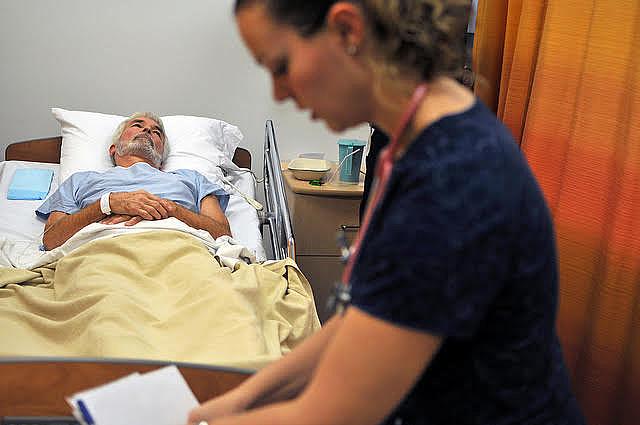Seven signs that point to a huge and growing workforce shortage in health care

The contentious debate in Washington D.C. last year over attempts to repeal the Affordable Care Act did little to stem the demand for more health care workers.
The rising demand for workers includes nurses, physicians, therapists, technologists, coders, leaders, and support staff. Growth in health care employment will fluctuate, but the long-range overall trend is decidedly upward.
Robust employment growth should be a positive trend for any industry. However, the health care industry may not be prepared. Increasing demand has been accompanied by a growing number of unfilled jobs, a serious challenge that’s reflected in the federal labor data and on the online job boards of hospitals and health systems, where thousands of open jobs are posted.
Seven strong signals show how demand for health care services and health care workers will continue to rise for the foreseeable future:
1. Health care spending: A powerful signal of rising demand for health care services and health care workers is how much money is projected to be spent on health care in the future. National health spending will more than double from 2010 to 2025, when it’s projected to reach beyond $55 trillion. Labor constitutes the single largest expenditure for health care organizations.
2. Healthcare employment trend: A booming jobs market has persisted since the end of the recession, with only small employment declines in three separate months in 2013. Even through the Great Recession (2007-2012), health care jobs grew every month. Since 2014, job growth has been robust, reaching a single-month record of 45,000 new jobs in October 2015. In 2017, despite the continuing debate over national health care policy, jobs grew by 300,000. That’s a big year in any industry.
3. Unfilled jobs: The challenges begin to show when you look at the differences between health care job openings and job hires, an unfilled jobs gap that has widened since the recession. In December 2017, there were approximately 500,000 more job openings than hires in health care.
4. Projected job openings: This statistic is nothing short of amazing. The Bureau of Labor Statistics projects that there will be 1.26 million total job openings per year from 2016-2026 in health care. That includes 624,000 for health care practitioners and technical jobs. This huge number of openings is driven by new jobs, along with retirements, workers quitting, and any other kind of job loss.
5. Aging population: Why will demand remain so high? Perhaps the greatest driver of demand is the aging of the U.S. population. According to the U.S. Census Bureau, the number of people over 65 will grow from 43 million in 2012 to 84 million in 2050, rising from 14 percent of the population to 21 percent. Older people need both a greater quantity and a greater complexity of health care services — both or which result in the need for more health care workers.
6. Better economy, more demand: The overall number of jobs in the United States is projected to increase by 11.5 million from 2016 to 2026. Employment is directly correlated to health care use, because many jobs come with health insurance benefits or they put money in people’s pockets that can be spent on copays, deductibles and direct health care costs.
7. Health care retirement tsunami: The demand for health care workers is also exacerbated by the wave of retirements among Baby Boomer health care providers. Evidence from the recent AMN Healthcare 2017 Survey of Registered Nurses suggests that this wave already has begun. In addition to nurses, more than one-third of today’s active physicians turn 65 within the next 10 years. The retirement wave also creates hard-to-fill vacancies of experienced specialty practitioners.
In the health care industry, the limited supply of health care workers is quickly becoming one of the biggest challenges. Health care providers are, by necessity and mission, focused on patient care, not on talent acquisition. On average, only about 1 percent of health care organizations’ budgets are spent on human resources, and only a fraction of that goes toward talent acquisition. That means health care providers will need to tap the know-how of workforce experts to overcome shortages of nurses, physicians and other practitioners, and the quality, cost and staffing problems such shortages will cause.
[Photo by University of the Fraser Valley via Flickr.]

